There are at least 305 domestic rabbit breeds across 70 countries in the world, with many breeds being developed through selective breeding as opposed to natural selection.
With this many rabbit breeds, it can be difficult selecting one as a pet that will suit you as different rabbit breeds vary in personality and behavior.
Similar to when choosing a new dog or your next chicken breed, some rabbit breeds are extremely active and energetic, while others are calm and shy.
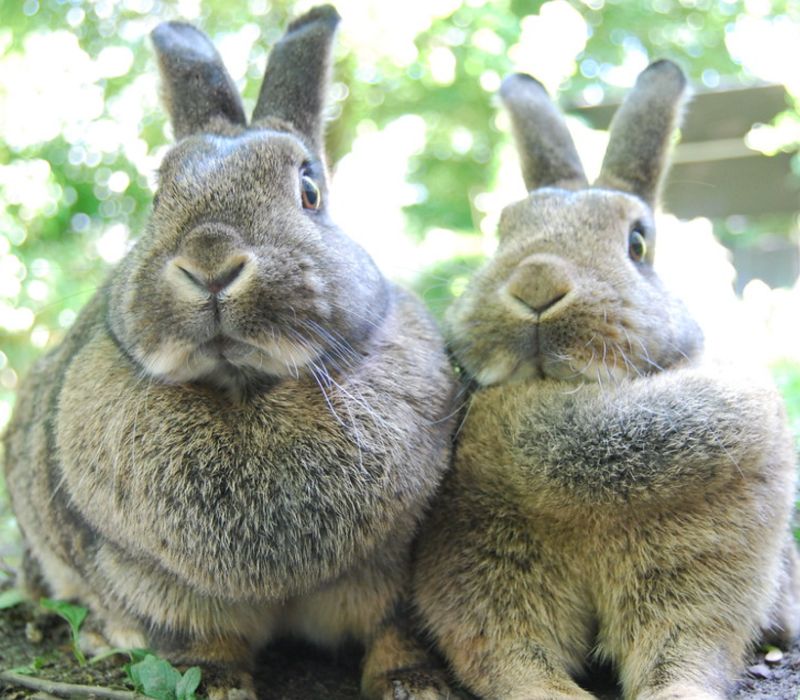
In this article, we list our top 10 popular rabbit breed pets outlining their personality traits, size, maintenance, and healthcare upkeep as well as the best food and play toys. Keep reading for the ultimate guide for rabbit breed pets.
Different Types of Rabbit Breeds
The various types of rabbit breeds determine specific behavior, sociability, appearance, and size, which are all dealbreakers for people when deciding on a pet rabbit.
The following is a list of 10 of our favorite indoor rabbit breeds that also make the best pets.
American Rabbit
The American Rabbit was first developed in Pasadena, California in 1917. Originally known as the German Blue Vienna, this particular rabbit breed was later identified as the American Blue Rabbit after World War I.
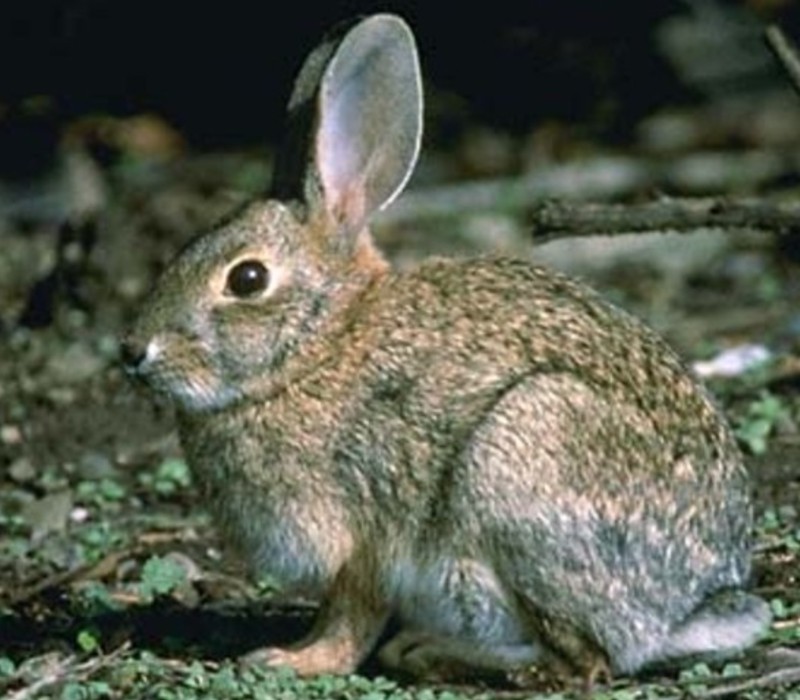
At that point, many rabbit keepers and rescue organizations referred to mix breeds of rabbits or “mutts” as “American” thus giving it the name, American Rabbit.
Behaviour
Docile and gentle with a lazy disposition.
Food
The American rabbit does not require any special diet. Instead just regular fresh water, hay, vegetables, and nourishing food pellets, with the occasional treat.
Maintenance
American rabbits need a large area of space to stretch and run around. It’s important to brush the coat of American Rabbits every week and give them plenty of chew toys, playtime, and attention.
Healthcare
American rabbits are not susceptible to a specific health condition. However, all rabbits should always have annual veterinarian checkups for behavioral changes and illnesses.
American Rabbit Facts
| Breed | American Rabbit |
| Origins | California |
| Weight | 10-12 pounds |
| Coat | Silky fur, either white or blue |
| Life Span | 8-12 years |
Belgian Hare Rabbit
The Belgian Hare rabbit is not exactly a hare but instead, a domestic pet that has been selectively bred to mirror the characteristics of a wild hare.
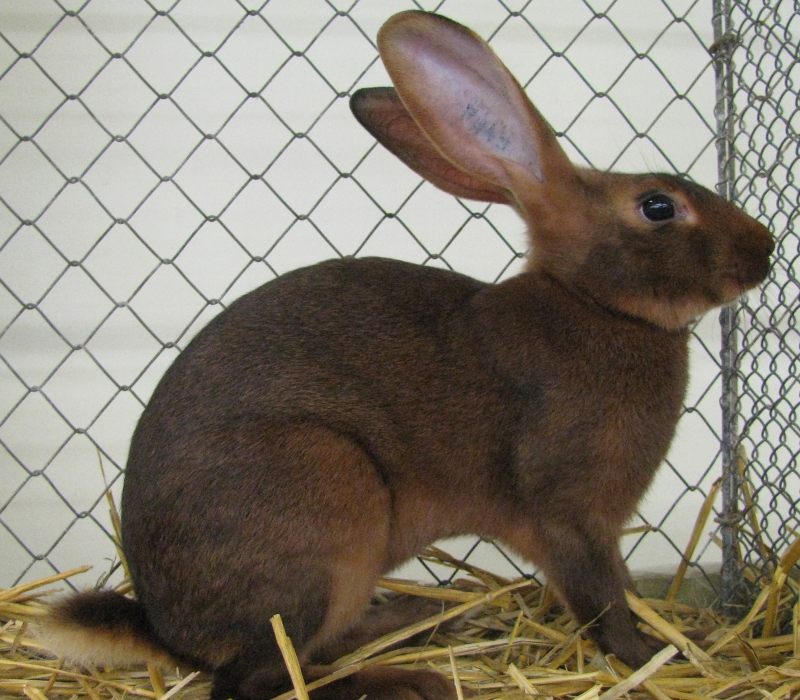
In contrast to being a feral breed, the Belgian Hare rabbit is considered a “fancier” more tamed version of the hare.
The Belgian Hare rabbit first originated in Belgium in the 18th century and is the result of crossbreeding between domestic rabbits and wild European rabbits.
Belgian Hare Rabbit Facts
| Breed | Belgian Hare |
| Origins | Belgium |
| Weight | 6-9 pounds |
| Coat | Belgian Hare rabbits have a rust-colored coat with an orange tint. In addition, they also have a light undercoat that is visible on their bellies and around their eyes. |
| Lifespan | 7-11 years |
| Behavior | Belgian Hare rabbits are extremely active and restless. As well as this, they have a tendency to be frightened easily. They require a lot of room for playing and activities and are smart enough to learn tricks. |
| Food | The Belgian Hare rabbit does not require any special diet. Instead just regular fresh water, hay, vegetables, and nourishing food pellets, with the occasional treat. |
| Maintenance | Belgian Hare rabbits need more room than any other domestic rabbit. It’s important to allow them a have large area to exercise and give them toys to motivate them to run around. We recommend hanging a Belgian Hare’s water high up in order to encourage the rabbit to stretch while drinking. Additionally, their short hair needs minimal attention, brushing their coat once a month is more than enough. |
| Healthcare | Belgian hare rabbits are not susceptible to a specific health condition. However, all rabbits should always have annual veterinarian checkups for behavioral changes and illnesses. |
Blanc de Hotot Rabbit
Originally developed in France, the Blanc de Hotot rabbit has a unique complexion that makes it one of the most recognizable rabbit breeds.
With a white coat and black rings around each eye, the Blanc de Hotot rabbit breed migrated across Europe and North America in the 1920s.
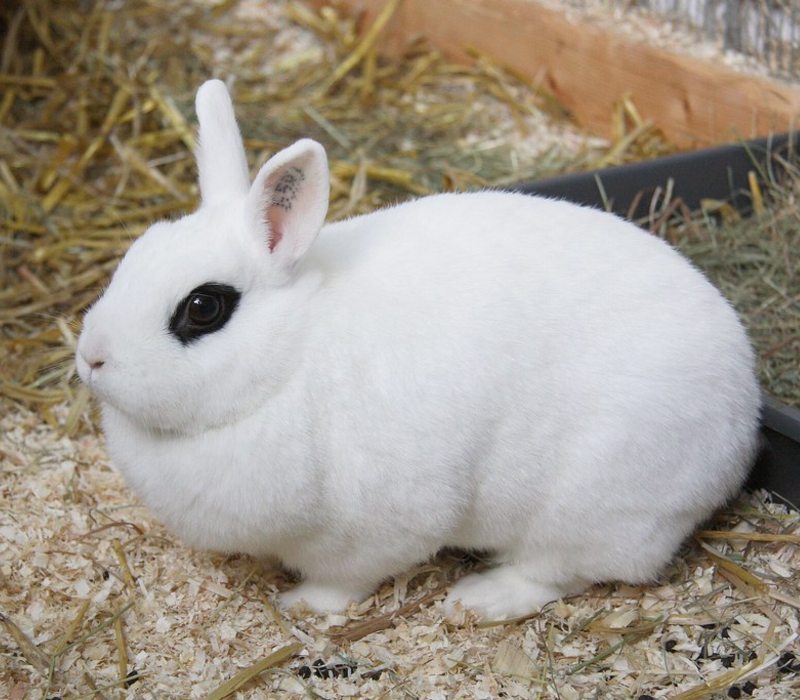
However, this particular rabbit breed was initially unpopular in the United States having completely died out in that particular region.
In the 1960s and 1970s, we saw a re-emergence of this rabbit breed. Today, the Blanc de Hotot is recognized by the British Rabbit Council and the American Rabbit Breeders Association but is considered a threatened and endangered species.
Blanc de Hotot Rabbit Facts
| Breed | Blanc de Hotot |
| Origins | France |
| Weight | 8-11 pounds |
| Coat | Soft white fur, with black bands around eyes |
| Life Span | 5-8 years |
| Behavior | Blanc de Hotot rabbits are a hardy breed with a sweet disposition. They are not overly active and prefer to be indoors opting for only light exercise outside. |
| Food | Food for Blanc de Hotot rabbits should consist of 70% hay, with the remaining consisting of leafy greens, vegetables, and pellets. |
| Maintenance | Use a slick brush every two weeks during off-season shedding times, and 1-2 times per week when they begin to shed, usually in Spring and Autumn. |
| Healthcare | Blanc de Hotot rabbits are not susceptible to a specific health condition. However, watch out for the common health problem of overgrown teeth. This can be prevented with a healthy diet and plenty of portions of hay. |
Netherland Dwarf Rabbit
The Netherland Dwarf is the smallest rabbit breed on our list which originated from the Netherlands in the 20th century.
The early Netherland Dwarf rabbits were known to have aggressive temperaments but have quietened down significantly after generations of selective breeding.
Today, Netherland Dwarf rabbits are regarded as gentle and friendly pet rabbits with energetic personalities.
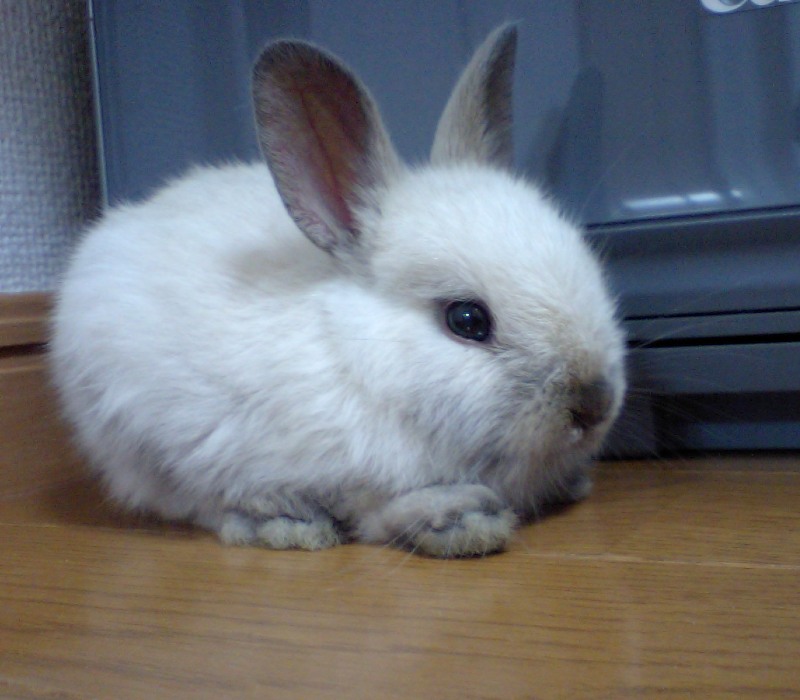
This miniature rabbit breed is often mistaken for the Polish Rabbit with its small physique and white coat. However, the Polish rabbit has longer ears, whereas the Netherland Dwarf’s ears are short and narrow.
Netherland Dwarf Rabbit Facts
| Breed | Netherland Dwarf |
| Origins | The Netherlands |
| Weight | 1-2.5 pounds |
| Coat | Soft, short hair in a wide variety of colors and patterns. |
| Life Span | 10-12 years |
| Behavior | Netherland Dwarf rabbits are naturally shy and need a lot of gentle socialization in order to be friendly with humans. |
| Food | Netherland Dwarf rabbits need a small amount of fresh water, hay, and vegetables in order to sustain a healthy diet. |
| Maintenance | It’s only required to brush Netherland Dwarf rabbits during shedding season in Spring and Autumn. While these teeny rabbits only need a small space to play and exercise, it’s crucial that they stay indoors, for the most part, safe from harsh weather and predators. |
| Healthcare | The Netherland Dwarf rabbit is susceptible to a jaw condition known as malocclusion, which makes them incapable of wearing down their own teeth. Regular visits to the veterinarian to have their teeth filed is important for Netherland Dwarf rabbits. |
Holland Lop Rabbit
The Holland Lop is another dwarf rabbit on our list but larger in size compared to the Netherland Dwarf rabbit. Originally from the Netherlands, the Holland Lop is named after its distinctive characteristic as a lop-eared rabbit.
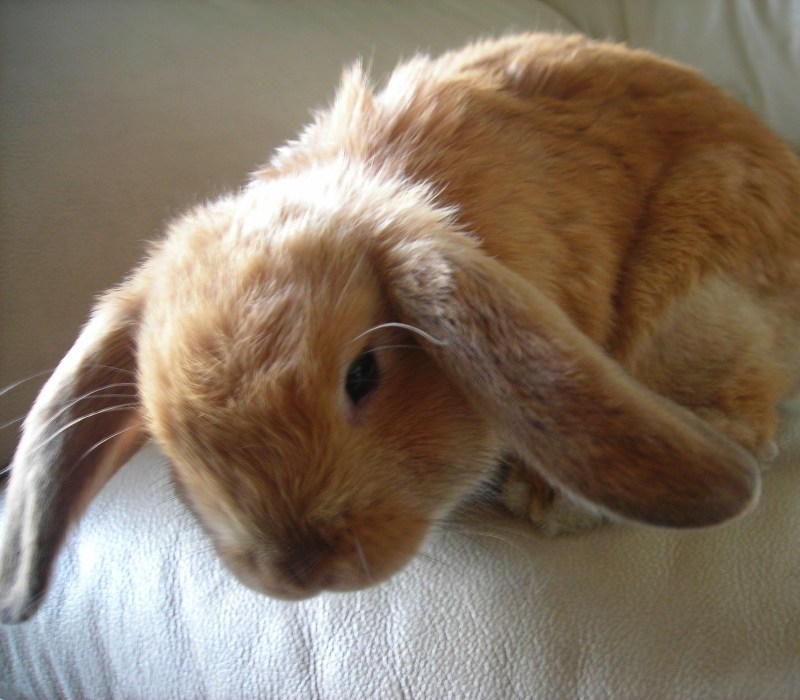
A loped-ear rabbit refers to a rabbit’s droopy ears, as opposed to erect, pointy ears. An interesting fact about the Holland Lop rabbit is that they are the direct offspring of over-sized French Lops and under-sized Netherland Dwarfs, created as a result of selective breeding.
Holland Lop Rabbit Facts
| Breed | Holland Lop |
| Origins | The Netherlands |
| Weight | 2-4 pounds |
| Coat | A thick and glossy, medium-length fur. |
| Life Span | 7-14 years |
| Behavior | The Holland Lop was bred for the purpose of being a pet and is known for being sweet and sociable. |
| Food | Holland Lop rabbits only need a small amount of fresh water, hay, and vegetables in order to sustain a healthy diet. As this rabbit breed is so small, food portions should be much smaller than larger rabbit food portions. |
| Maintenance | Holland Lops are an active breed for a small rabbit and require a moderate amount of room for exercising and playing. Their hair should be brushed once a week or more often, and their ears should be checked and cleaned on a regular basis. |
| Healthcare | Holland Lops are not susceptible to any specific health condition. However, because their ears are long, they should be inspected and cleaned regularly. |
Dutch Rabbit/Hollander
Although the name implies that this rabbit breed comes from the Netherlands, the Dutch rabbit actually originates from England.
The Dutch rabbit does however have its roots in the Petit Brabançon, which is a breed of rabbits from Flanders, a Dutch-speaking region in Northern Belgium.
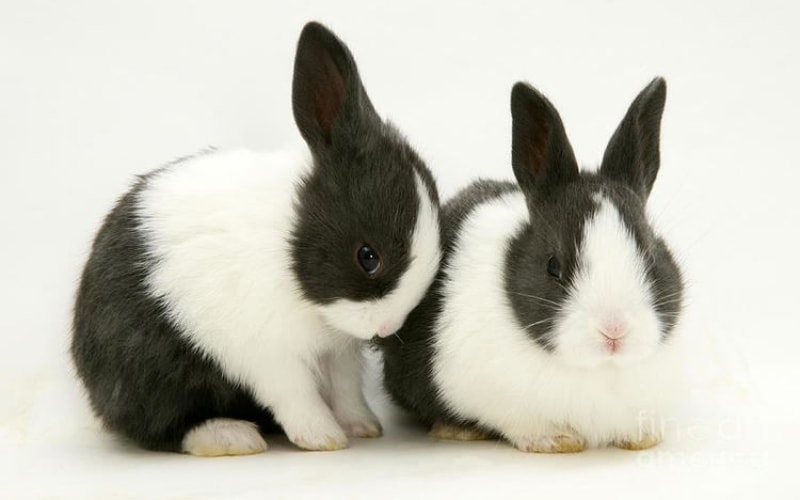
During the 1830s, rabbits were transported from Belgium to England every week for the meat market trade. The Dutch Rabbit, also known as Hollander, is often identified by its distinct color patterns.
Credited as one of the most popular rabbit breeds of all time, the Dutch rabbit has ranked as one of the top ten most favorable rabbit breeds in the world as pets and for show breeders.
Dutch Rabbit/Hollander Facts
| Breed | Dutch Rabbit, also known as the Hollander |
| Origins | England |
| Weight | 4-6 pounds |
| Coat | Dutch Rabbits have short, glossy fur, with white legs, bellies, shoulders, and a white border from their noses to their foreheads. |
| Life Span | 5-8 years |
| Behavior | Dutch Rabbits can be described in three words – gentle, calm, and sociable. This rabbit breed flourishes with the company of others and is known to be friendly and trainable. |
| Food | The Dutch Rabbit does not require any special diet. Instead just regular fresh water, hay, vegetables, and nourishing food pellets, with the occasional treat. |
| Maintenance | Dutch rabbits need enough space for exercise but not as much room as larger breeds. Their soft coats should be brushed weekly, and daily during the shedding seasons. |
| Healthcare | The Dutch Rabbit is not susceptible to a specific health condition. However, all rabbits should always have annual veterinarian checkups for behavioral changes and illnesses. |
English Lop Rabbit
The English Lop rabbit is known as one of the first lop rabbit breeds developed by humans. The English Lop rabbit is one of the oldest domestic rabbits with its origins by selective breeding dating back to the 19th century.
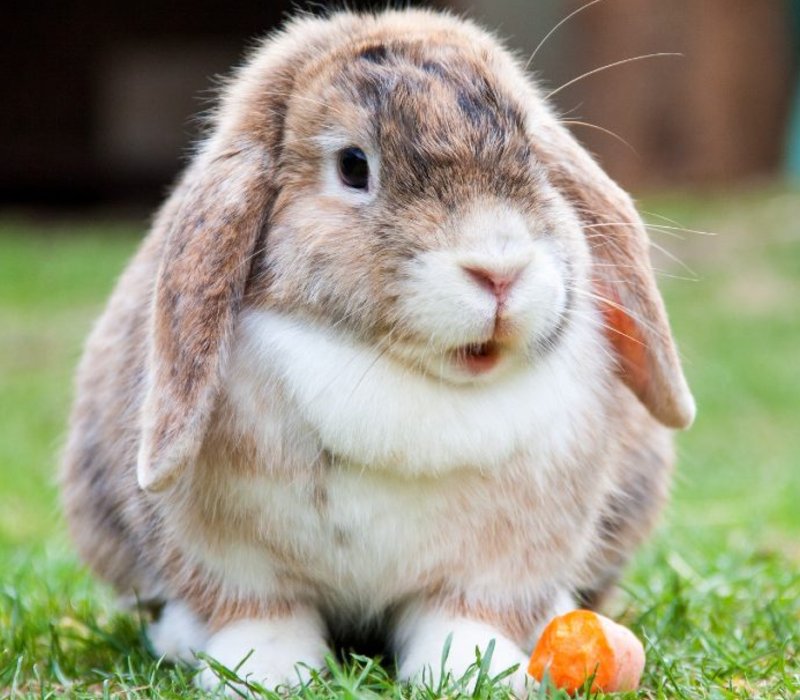
Fun fact, an English Lop rabbit named, Nipper’s Geronimo held the Guinness World Record in 2003 for his lop ears measuring at a whopping 79cm.
English Lop Facts
| Breed | English Lop |
| Origins | England |
| Weight | 9-10 pounds |
| Coat | The English Lop has short hair and a smooth coat which comes in a wide range of colors and patterns. |
| Life Span | 7-12 years |
| Behavior | English Lop rabbits are a beautiful mix of calm and gentle, along with being playful and active. They’re easy to train and are not heavy chewers. |
| Food | English Lops do not require any special diet. Instead just regular fresh water, hay, vegetables, and nourishing food pellets, with the occasional treat. |
| Maintenance | English Lops should never be exposed to freezing temperatures outside for risk of their long ears freezing when touching the ground. English Lops only need to be brushed occasionally and require plenty of space to play. This rabbit breed is very welcoming to other pets as well as with human interaction. |
| Healthcare | English Lop rabbits are prone to wax buildup in their ears, which should be cleaned on a regular basis. |
English Spot Rabbit
The English Spot rabbit originated in England in the 19th century and is identified by six distinct features.
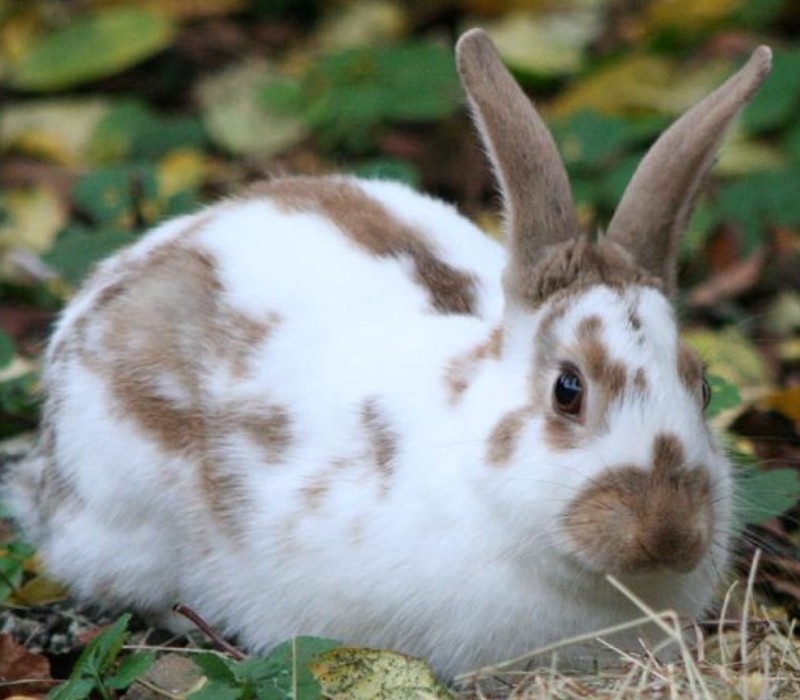
The English Spot’s distinguishable characteristics include nose markings in the shape of a butterfly, circles around the eyes, spots on their cheeks, herringbone markings, colored ears, and a chain of spots.
English Spot Rabbit Facts
| Breed | English Spot |
| Origins | England |
| Weight | 5-8 pounds |
| Coat | English Spot rabbits are identified by their spotted coats, cheek, and colored ears. They also have a stripe of color along their backs and a butterfly-shaped marking on their nose. |
| Life Span | 5-9 years |
| Behavior | The English Spot was bred specifically as a show animal, so they are naturally calm and gentle. They are less energetic in comparison to other rabbit breeds. |
| Food | English Spot rabbits do not require any special diet. Instead just regular fresh water, hay, vegetables, and nourishing food pellets, with the occasional treat. |
| Maintenance | English Spot rabbits require 1-2 hours of exercise and activity a day, but in general, they are very calm rabbits that like to stay indoors. |
| Healthcare | English Lop rabbits are not susceptible to a specific health condition. However, all rabbits should always have annual veterinarian checkups for behavioral changes and illnesses. |
Flemish Giant Rabbit
The Flemish Giant rabbit originated in the Dutch-speaking region of Flanders, in northern Belgium. This particular rabbit breed is known as one of the largest rabbit breeds and dates back to the 16th century.
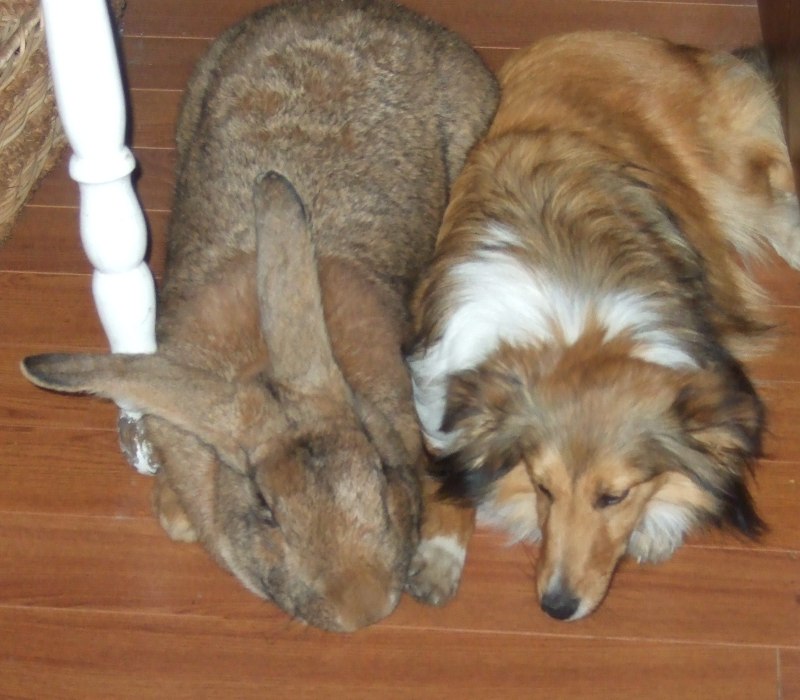
Additionally, the Flemish Giant rabbit was imported to the United States in the 1890s for the purpose of profiting in the meat industry.
Flemish Giant Rabbit Facts
| Breed | Flemish Giant rabbit |
| Origins | Belgium |
| Weight | 9-15 pounds |
| Coat | Flemish Giant rabbits have dense, glossy, short hair that comes in a range of solid colors. |
| Life Span | 5-8 years |
| Behavior | Intelligent enough to train, Flemish Giant rabbits are known as “gentle giants” because of their sweet and docile nature. |
| Food | Due to their large size, Flemish Giant rabbits need a generous amount of food but don’t require any special diet other than water, hay, and vegetables. |
| Maintenance | This hefty rabbit breed requires large hutches and space to get exercise. They should not be given two-level hutches, as as they find it difficult to climb ramps or steps. |
| Healthcare | Flemish Giant rabbits are not susceptible to a specific health condition. However, all rabbits should always have annual veterinarian checkups for behavioral changes and illnesses. |
Harlequin Rabbit
The Harlequin Rabbit is a playful rabbit breed that is best known for its colorful patches and unique markings.
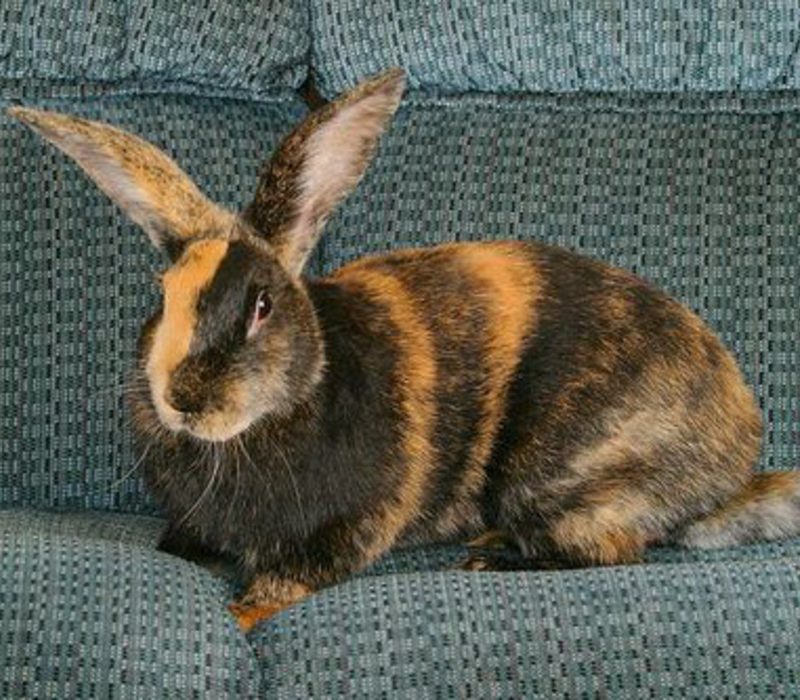
Originally from France, some experts argue that the Harlequin rabbit is not an actual rabbit breed but instead just a color type. However, the ARBA only recognizes this specific color type in the Harlequin rabbit breed.
Harlequin Rabbit Facts
| Breed | Harlequin Rabbit |
| Origins | France |
| Weight | 6.5-9.5 pounds |
| Coat | Harlequin Rabbits have short fur that is soft with dramatic colorful stripes across their body. This rabbit breed typically has different colored ears from their face and can vary in many distinct colors. |
| Life Span | 5-8 years |
| Behavior | This rabbit breed makes for an excellent pet, as Harlequin Rabbits are curious, social, playful, and are capable of learning tricks. |
| Food | Harlequin Rabbits do not require any special diet. Instead just regular fresh water, hay, vegetables, and nourishing food pellets, with the occasional treat. |
| Maintenance | Harlequin Rabbits require a lot of activity because of their high energy. This rabbit breed only needs to be brushed every fortnight but more frequently during shedding season. |
| Healthcare | Harlequin Rabbits are not prone to a specific health condition. However, all rabbits should always have annual veterinarian checkups for behavioral changes and illnesses. |
The Best Food for Rabbits
In general, all rabbit breeds need a diet that consists of water, fresh hay, pellets, and vegetables. Take a look at our detailed shopping list for the best quality rabbit food.
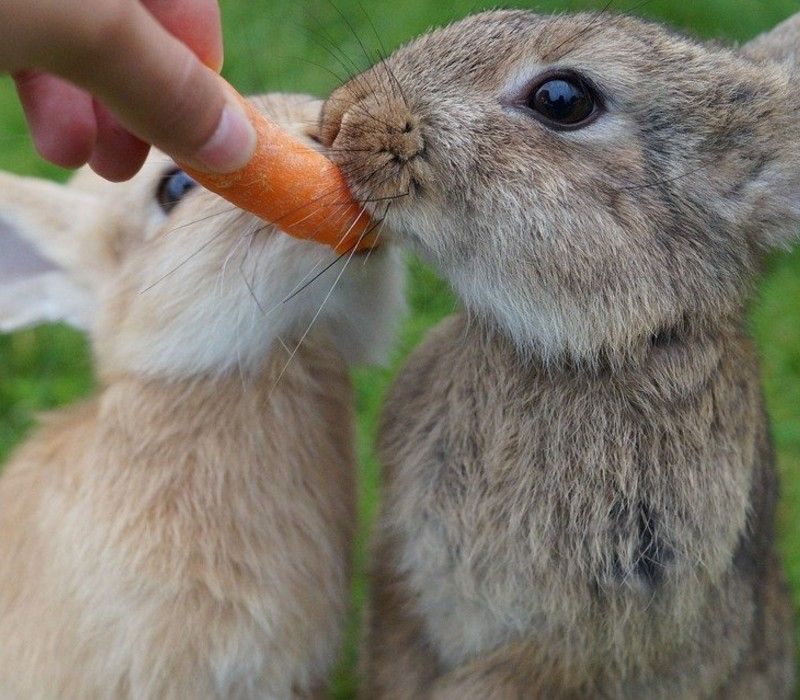
Hay for Rabbit Food
Feeding hay to rabbits provides a diet as close as possible to their natural diet. We recommend feeding your rabbit Alfalfa hay which is high in minerals and contains at least 10 different vitamins. This particular type of hay is best fed to younger rabbits.
Another excellent type of hay for your rabbit’s diet is Orchard grass. This type of hay can be mixed with Alfalfa in order to provide a quality grass diet for your rabbit.
Pellets for Rabbit Food
It’s crucial that you keep pellets fresh and only purchase brands with a minimum of 18% fiber.
Be careful not to buy six weeks’ worth of food at one time as this will run the risk of the pellets becoming spoiled.
As your rabbit grows older, their diet should consist of fewer pellets. Our favorite brands of rabbit pellets are Alfalfa Pellets for younger rabbits and Kaytee Timothy Complete Pellets for older rabbits.
Vegetables for Rabbit Food
It’s important to look for a variety of veggies when shopping for any rabbit breed. Pick up both dark and leafy veggies and make sure to avoid beans and rhubarb. The following are a must for every rabbit’s diet:
- Romaine lettuce
- Mustard greens
- Carrot tops
- Cilantro
- Watercress
- Basil
- Beet greens
- Brocolli
The Best Bedding for Rabbits
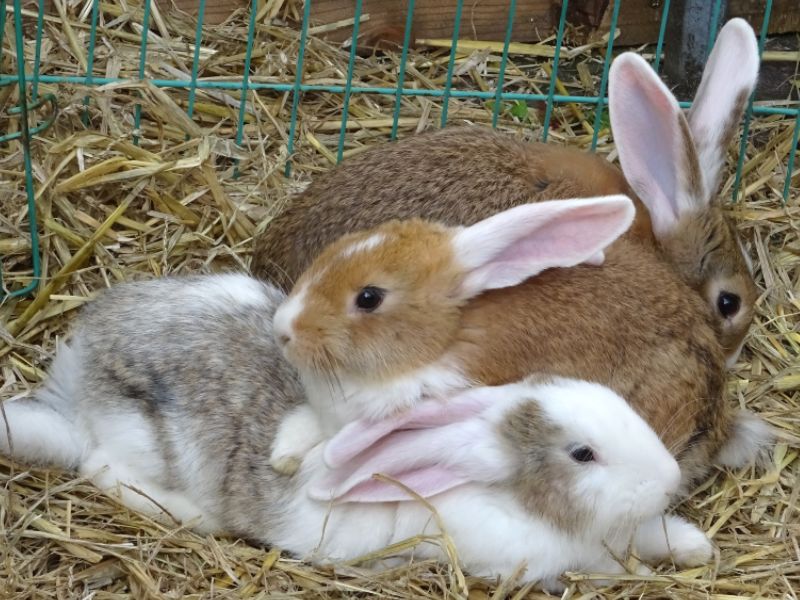
Since some bedding options can actually be harmful to rabbits, we’ve provided a list of the best types of bedding for all rabbit breeds that provide comfort as well as being safe for their bodies.
| Timothy 2nd Cut Hay | Safe to eat and comfortable to rest on. |
| Pelleted Wheat Eco-Straw | Edible and keeps rabbits warm and insulated. It’s the perfect option for outdoor rabbits. |
| Kaytee Aspen | Odor-free and extra absorbent, as well as being edible. |
| Paper Pulp | Shredded paper is highly absorbent and works great for indoor rabbits. |
| Shredded Cardboard | An economical, safe, and edible option for rabbit bedding that will keep your bunny warm as well as absorb urine. |
Here the most popular rabbit beddings based on our reader’s reviews.
The Best Play Toys for Rabbits
From chewy sticks to mental stimulating puzzles, we’ve put together a list of the best play toys for pet rabbits that aim to help keep them active and entertained.
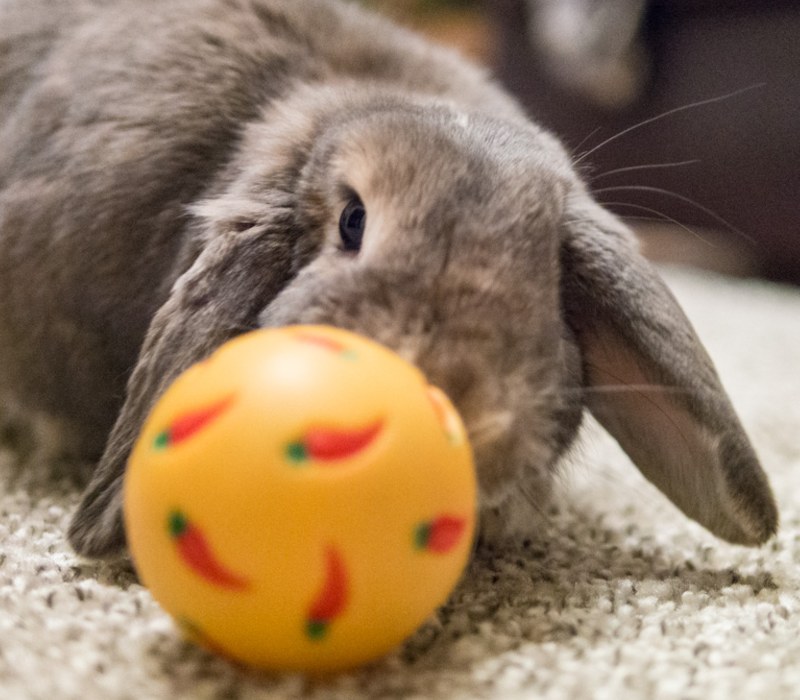
Living World Teach N Treat Toy
The living world rabbit toy is a puzzle that aims to encourage all rabbit breeds to forage for food and stimulate critical thinking.
Kaytee Lava Ledge Climbing Tool
This rabbit toy is a climbing tool that can function as a chew toy and is also excellent for filing your rabbit’s nails.
Ware Fun Tunnel Play Tube
As the name exposes, the ware fun rabbit play tube is a flexible tunnel that bends into a variety of shapes that provide extra activities for your rabbit when exercising.
Kaytee Apple Orchard Rabbit Sticks
These rabbit sticks are a must for every rabbit owner. These chewy sticks are durable and entertaining for even the most aggressive rabbit chewers.
Rabbit Breed FAQs
Since we get a lot of questions from our readers regarding the different types of rabbit breeds, we’ve assembled a table of frequently asked questions below with detailed answers.
What Rabbit Breeds Make the Best Pets?
From our list, the best rabbit breed pets are the Holland Lop rabbit, the Netherland Dwarf rabbit, and the Harlequin rabbit because of their energetic, friendly, and playful nature.
What Are The Best Types of Rabbit Food?
Rabbits need a healthy diet of freshwater, hay, and vegetables.
How Many Rabbit Breeds Are There?
There are at least 305 known domestic rabbits across 70 countries in the world.
What Are the Calmest Rabbit Breeds?
The calmest rabbit breeds that make the best pets include the Holland Lop, the Blanc de Hotot, the Flemish Giant, the English Spot, the Dutch Rabbit, and the American Rabbit.
Start Preparing for Your Very Own Pet Rabbit
Start getting ready for your very own pet rabbit with this ultimate guide to the best rabbit breed pets.
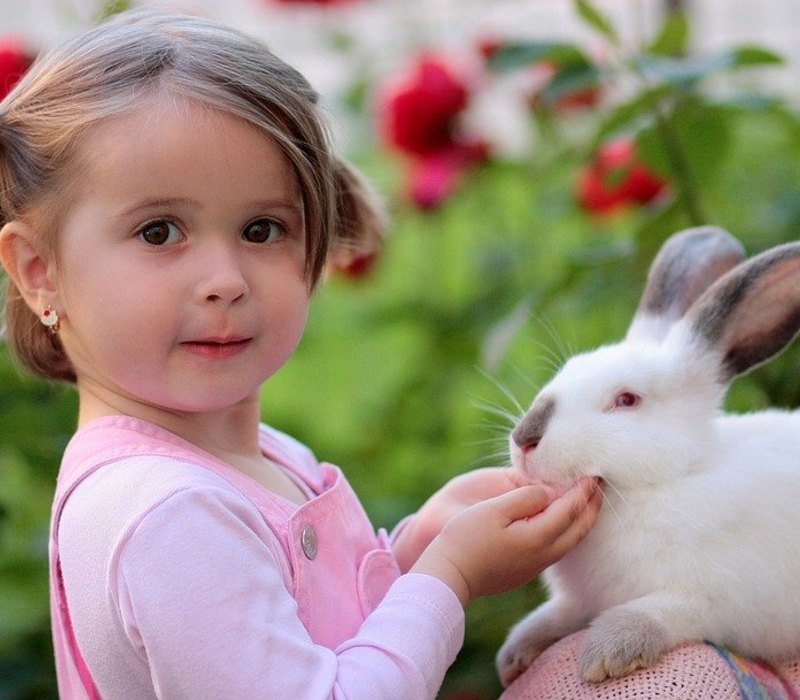
Use our helpful resources to understand the best foods for rabbits as well as locking down the safest and most comfortable bedding for your future pet.
Which per rabbit breed do you love most? Let us know in the comments which one is joining your home and family!

Leave a Reply